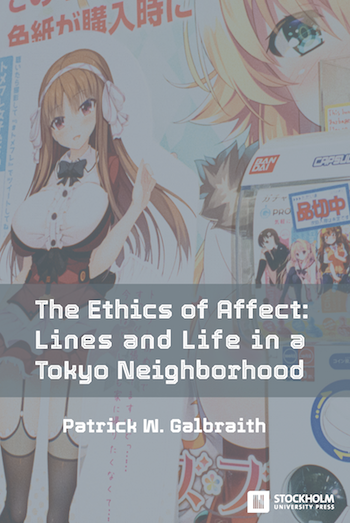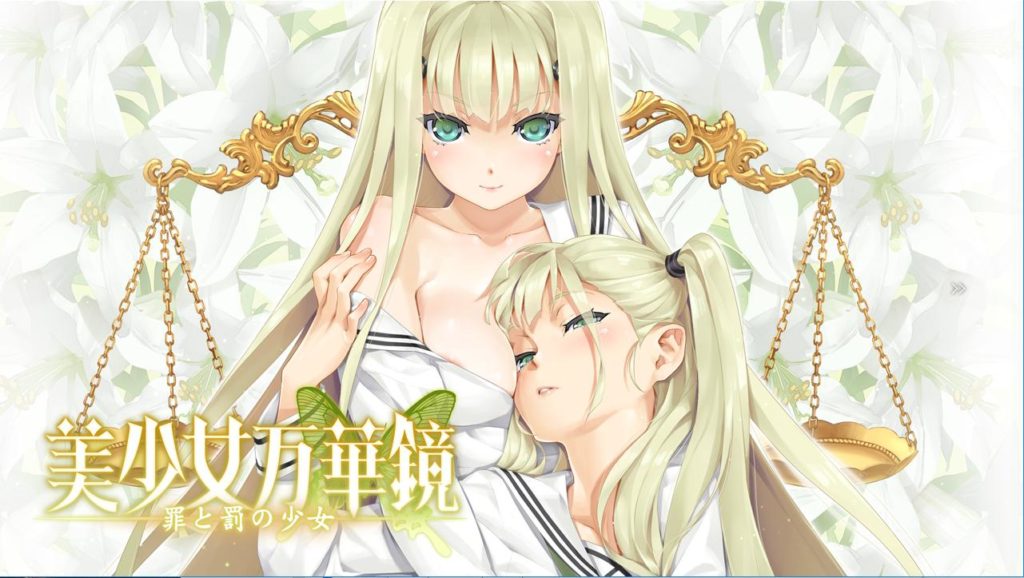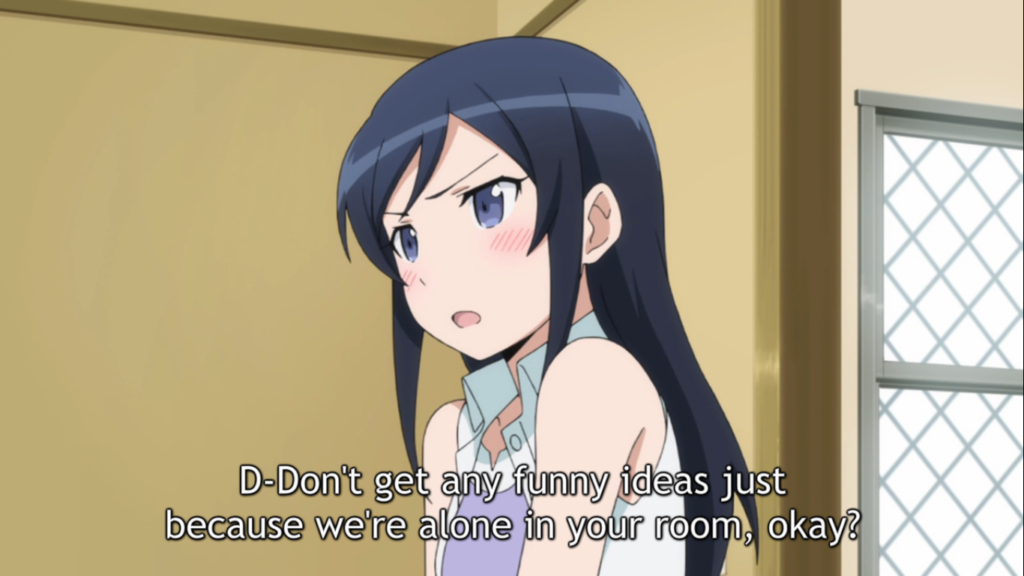Books: The Ethics of Affect
November 8, 2021 · 0 comments
By Jonathan Clements.

Those silly do-gooders in Akihabara, making a computer game company take down a mere advertising billboard on the grounds it might offend, shock or otherwise discombobulate passing members of the public. Then again, since the billboard was advertising a game called More! Knock ‘Em Up! Blazing Boobs Super Erotic App School, I dread to think what it showed – the image above has discreetly put bras on all the characters, but that’s not what they looked like originally. In his book The Ethics of Affect: Lines and Life in a Tokyo Neighborhood, Patrick W. Galbraith uses the incident as one of many examples of tensions over the establishment of “safe spaces” in public and private life: safe not only for passing nuns, schoolteachers, your mum and your sister, but your friendly neighbourhood anime historian who doesn’t want every conversation about the medium to turn into a discussion of cartoon jailbait, and indeed an entire subculture of Japanese men who want the freedom to leer at cartoon jailbait without inviting censure.
Two years ago, in my review of Galbraith’s Otaku and the Struggle for Imagination in Japan, I noted that the book finished with a series of slingshot ideas, as if Galbraith had more to say, but had to bow out for now as he approached the edge of his wordcount. His new work from Stockholm University Press seems to be the first of the “contingent articulations” that he promised, continuing his adventures as anime and manga’s self-appointed Danger Man, perpetually poking at the hornets’ nest in search of anthropological understanding.

As with his earlier book, there is much here that is sure to be co-opted by those looking for something to disapprove of. Galbraith earnestly seeks to comprehend a decidedly odd sector of the otaku community, but in doing so is sure to provide plenty of fodder for the anti-Japan lobby, starting with his opening chapter, in which he chances upon the discovery that the super-pervy bishojo games he acquires in Akihabara will not install on a non-Japanese operating system. This, it transpires, is quite deliberate – a non-compatibility function designed to prevent foreigners from “misunderstanding” a subculture of eroticised under-age girls.
Galbraith delves into crucial issues to do with the world of bishojo games, including the “customer journey” taken by pilgrims to Akihabara, who enjoy browsing in a safe space of their own, away from the prying eyes of disapproving members of the public. Not for the first time, he is treated like a pariah by the most unlikely figures, including a pimp in Kawasaki who is disappointed that he is not interested in sex with a real prostitute, and reluctantly gives him directions to an all-night rave where drunken men will cavort on the dance-floor with their wife-pillows. Not even the bishojo fans themselves are all that welcoming to him – he is ejected from a private event on the ground that he is “someone collecting information for foreign countries.” “Any article I was imagined to write,” he explains, “would not lead to sales, and might instead encourage illegal distribution and generate negative publicity.”
Galbraith argues that the men he interviews are a harmless subculture, living by the motto of one of their magazines, to “embrace fiction and sleep.” As he unpacks at great length, this points to a group that distinguishes very clearly between fantasy and reality, and which is quick and stern to shut down any suggestion otherwise. In doing so, he deals with a bunch of ideas from the discourse over censorship and media harm, such as “the enunciator’s exception” – which is to say, the idea that a film censor will not be corrupted by watching “harmful” material, but a member of the public apparently will be.
He contends with a number of accepted truisms in the world of media studies, most notably the long-standing feminist critique that “pornography” was the theory of sexual violence, and rape its practice. In doing so, he wanders into an intriguing area about the alleged appeal of bishojo games, arguing that sometimes they are less about the molestation of fictional females than they are about eavesdropping on their “interiorities” – which is to say, their private thoughts, hopes and dreams. I think that this is a truly interesting avenue of enquiry, and one which both the proponents and opponents of pornography often overlook: the possibility that, yes, even the implied male consumer of mainstream pornography might have some hidden, suppressed or unacknowledged yearning not for sex, but for love, attention and validation.

He pursues this thread of female attention all the way back into ancient gaming history, starting with the incredibly simple but often-overlooked expedient that the characters in Sakura Wars would address the player directly by name – something that is relatively easy to arrange in Japanese by recording just a few dozen phonemes, but impossible with the random pronunciations of Western languages. He goes on to poke around the history of the maid café, the first example of which opened in 1998 as a pop-up recreation of the café from Welcome to Pia Carrot 2.
He also mounts a compelling thesis concerning the design and appeal of “visual novels”. Many critics, myself included, have described them in proscriptive terms, as animation that is barely animated, or computer games that are barely playable, amounting to little more than personality tests to deliver a particular fantasy female and situation. Galbraith suggests that this is part of the plan, that the relatively low-tech design of bishojo games is not a matter of “rationalisation by an industry that has fallen desperately behind the times”, but one that perfectly targets and serves a market that wishes to interact in a certain manner with manga characters that come to some limited form of emotional and sexual life.
Twenty years ago, in The Erotic Anime Movie Guide, I reduced the character stereotypes in the early bishojo game into six distinct figures. I did so by deconstructing the code of several such “visual novels”, to see which branches of the storyline led to which particular set-up. A generation later, drawing on a published database of intertextual features, Galbraith outlines just a few of the “hundreds” of potential iterations that have since turned up – variations in hair colour, the meaning of spectacles or particular appetites or attributes, what it means in terms of “moe image literacy” if a girl has particularly coloured hair, or underwear.

“Not my thing,” says Anri, one of very few female interviewees, a young woman Galbraith meets at a gathering of gamers. “But who cares? It’s nothing to get upset about. People like it and it doesn’t hurt me.” A feminist critic would probably suggest that Anri might not realise the extent to which such material does, indeed, “hurt” her and others, and the author himself is not above being troubled by some of the scenes he witnesses, but Galbraith also clings nobly to the anthropologist’s creed, not to judge but to grasp at better understanding the worldviews of others.
Galbraith finishes by returning to a thesis from The Otaku Imagination, that the men he observes are not “failures” as such, but human beings attempting to cope with a society, economy and culture that has failed them. He quotes the scriptwriter Jun Maeda on the idea of moe fandom as a “reason to live” – an outlet of power and community in a Japan that offers little prospects for work, love or success. A “normal” life, he suggests, has not been a real possibility for many of these men for much of their adult lives; no wonder they have turned to imaginary girlfriends. Better that, he suggests, than embracing certain other outlets like nationalism, war-mongering, and fascism.
I mean, it’s not like there is a bishojo game about girls that are also battleships, is there…? Oh, wait…
Jonathan Clements is the author of Anime: A History. Patrick W.Galbraith’s The Ethics of Affect: Lines and Life in a Tokyo Neighborhood is published by Stockholm University Press and available as an open-source ebook.
Leave a Reply